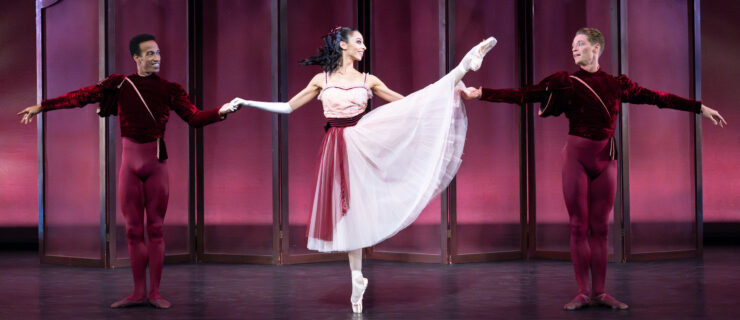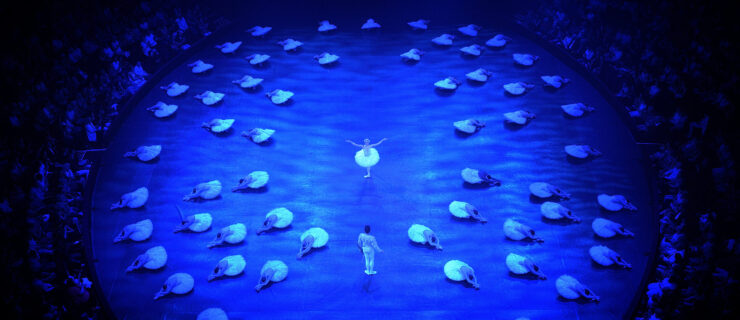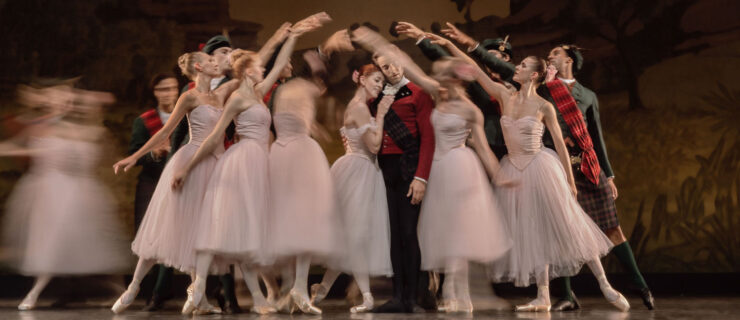Student Opportunities
A Prima’s New Role
Coming full circle, Chan Hon Goh recently became director of Goh Ballet Academy, the Vancouver school run by her parents where she trained. The former National Ballet of Canada principal will keep the ballet syllabus intact, but has added Pilates, musical theater and choreographic labs. She plans to increase performance opportunities, bringing in international guest choreographers to work with the new Goh Ballet Youth Company and Academy.
In addition, Goh has launched the Chan Hon Goh Scholarship Fund, which will award around $100,000 annually. Scholarships are awarded based on talent, need and dancers’ passion for the art form. See www.gohballet.com —Elizabeth Keniston
MFA For Ballet Choreography
Most MFA dance programs are modern-based, but Butler University wants to create a place to explore contemporary ballet choreography. The school will offer a new master’s of fine arts in dance next fall. “There was a time when Balanchine was brand-new and everything he did was completely different and exciting,” says department chair Michelle Jarvis. “We need to develop people who are going to do that again, and take ballet into the 21st century.”
The emphasis will be on ballet choreography, with secondary study in pedagogy. The two-year program is designed for professional dancers with at least five years of experience. Find out more about Butler on DanceU101.com. —Jennifer Stahl
Fouetté In Florida Tampa, Florida, is about to become a ballet-training powerhouse. The five-year-old Patel Conservatory recently announced that Peter Stark, former director of Orlando Ballet School, will be taking over as chair of its dance department.
Functioning as a satellite of Orlando Ballet School since 2006, Patel’s classical ballet program offers intensive training to young dancers, some of whom have gone on to dance with such companies as ABT, Boston Ballet and Pacific Northwest Ballet. Now, the conservatory’s ballet program will function as its own entity, with Stark at its head.
Stark will be a boon to the rapidly emerging school. During his time at OBS, he increased the budget fivefold and produced several top dancers. He’s hoping to see the Patel Conservatory become “a stepping stone for serious talent,” with plans to add more class options, performance opportunities and a new summer intensive program. According to Stark, the school will teach an American style of ballet, infused with Balanchine flavor and the strength and classicism of Cuban technique. See www.patelconservatory.org. —EK
Training In Russian
Studying at the Bolshoi Ballet Academy is usually no more than a far-off dream for most American ballet students. But for 12-year-old Julian MacKay, it’s a practical step toward realizing his goal of one day dancing with the Russian company. Although the prestigious academy trains 750 students each year, MacKay is one of only five Americans.
What has been the most challenging part so far?
Learning to understand my Russian teacher. Luckily, she uses a lot of pantomime. Russian training is also very hands-on: She physically moves my muscles so I understand how to use them.
How is the training different than in the U.S.?
My class is just nine boys, so I get specific training for male dancers. We take technique, character and gymnastics together.
Have you gotten to perform yet? I was one of 50 students chosen to be in our end-of-the-year performance. I got to do the mazurka in Paquita. I was also one of the children of court nobility in La Esmeralda with the Bolshoi company, with Natalia Osipova and Ivan Vasiliev. It was so amazing to stand backstage next to such awesome dancers! —JS
TIP: What are college auditioners looking for?
We look for people who seem focused and motivated and—who really like to move! We’re looking to train people. You don’t have to be proficient; you just have to have a motivating spirit, a passion for dancing. That’s hard to resist.
—Lawrence Rhodes, director of Juilliard’s dance division





